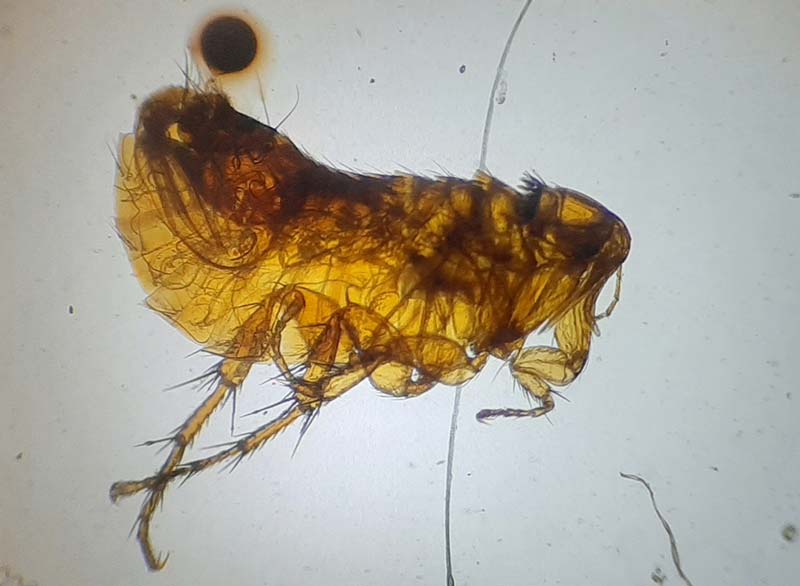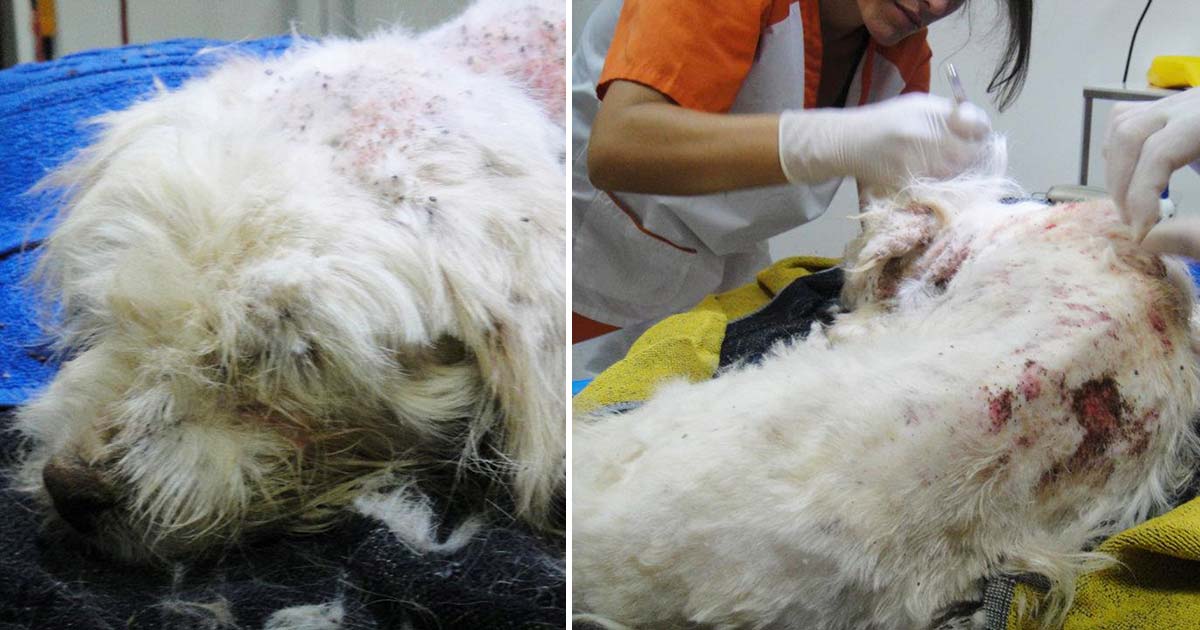16 Nov 2020
Laura Lacey explains the importance of encouraging owners to treat these parasites throughout the year and how to do this.

Image © KPixMining / Adobe Stock
Veterinary nurses are ideally placed to advise clients about the dangers associated with parasites.
Clients may not want to make an appointment to see the vet with problems as they may initially perceive them as trivial. They may wait and only present their pet once additional complications have arisen; for example, allergic dermatitis. Offering nurse clinics can allow us the opportunity to discuss preventive health care in private with individual clients at an earlier time.
Understanding the life cycle, and environmental needs of the flea and tick, can help us to explain why the problem is less likely to be confined to summer months. We need to make sure clients are aware only 5% of the flea population exists on the animal, with the rest being within the environment.
Most of the flea life stages appreciate a warm, humid environment, which is what many of us aim to create within our homes all year round. This means, even in the winter months, new adult fleas will be emerging and looking to feed. Although fleas prefer not to feed on humans, they will as they are non-host specific.
It can take up to three months to break the cycle as even environmental sprays do not kill fleas in the pupal stages. This means once an infestation has been identified, we need to manage client expectations and help them understand an instant fix does not exist. Once it has been controlled, prevention is always preferable in the long term (Figure 1).

Several different tick species exist in the UK and most have a species preference; however, they will still take a blood meal wherever they can find one. The tick species most likely to feed on humans is the sheep tick, Ixodes ricinus. This tick can be an issue for anyone with pets who lives close to, or exercises their pets in, areas with large numbers of sheep. Ixodes ricinus is also the main vector of Borrelia burgdorferi, the causative agent of Lyme disease.
Ticks will use any moving animal as a transport system to reach their next preferred destination. Once they have fed at each stage they fall to the floor to moult, with the newly emerged nymph or adult then climbing to a higher point to find their next meal passing by (Figure 2).

Fleas certainly cause discomfort to our patients. As a minimum they cause constant irritation and itching. This can lead to self-trauma, as well as hair loss. Flea allergy dermatitis (FAD), or flea bite hypersensitivity, is the most common dermatologic disease of domestic dogs (in the US).
Cats also develop FAD, which is one of the major causes of feline miliary dermatitis (Dryden, 2014). With this allergy to flea saliva we typically see areas that are being over-groomed, such as the back and around the tail base – areas they are able to reach most easily. Often owners will only make an appointment when they are being bitten or the pet is keeping them awake with their noisy scratching.
Ticks can take from days to weeks to complete their feed, so why are they not irritating to the pet? Ticks succeed in completing their blood meal due to the presence of a large number of biologically active molecules in their salivary glands, displaying anticoagulation, antiplatelet, vasodilatory, anti-inflammatory and immunomodulatory activities, according to Kazimírová and Štibrániová (2013). This is a system that has developed to ensure the survival of the tick, with minimal damage to the host and providing it with the time it needs to feed adequately.
Sometimes the sheer volume of fleas or ticks an animal is bearing will cause anaemia, purely due to the amount of blood being taken by each individual feeding. While this is often considered extreme, small animals such as kittens and small puppies can easily be compromised, and prolonged exposure to an infestation in any of our companion animals may result in death (Figures 3 and 4).

As previously mentioned, ticks are the main vector for Borrelia burgdorferi. Not all ticks will carry the bacteria; however, all have the potential to. Small amounts of saliva from the tick may enter the skin of the host animal during the feeding process. If the tick contains a pathogen, this organism may be transmitted to the host animal. The longer the tick remains attached to the skin, the greater the risk of contracting a disease.
Estimates have suggested a tick needs to feed for more than 24 to 48 hours before pathogen transmission occurs, according to Tulloch (2018). Owners should be vigilant in checking their pets after walks in tick-prevalent areas to decrease the time ticks may have to feed, and so the potential exposure window can be removed.
If the host animal has a blood-borne disease it will be taken up by the tick in a more rapid time frame, which then allows it to be spread to the next host.
Lyme disease is a zoonotic disease and has been prevalent in the news recently due to a persistent under-diagnosis being acknowledged in people. Many celebrities have been sharing their experiences of living with the disease.
Ticks can also transmit Babesia parasites, which infect and destroy red blood cells. Babesiosis can cause haemolytic anaemia, which can lead to jaundice and dark urine. Both Lyme disease and babesiosis can be treated in people, although they are sometimes hard to diagnose, but severe cases can cause death when complications arise.
Ehrlichiosis is a bacterial illness that can be transmitted by ticks, and tick-borne encephalitis (TBE) is a viral infection that affects the CNS. Both cause flu-like symptoms, but TBE can deteriorate to meningitis.
Fortunately, the latter two diseases are not currently a regular issue in the UK, but with the changes to movement of animals and a change in climate, a risk that these incidents will increase exists. They are more prevalent in Europe and warmer climates. However, Public Health England has recently confirmed “the diagnosis of a case of babesiosis and a probable case of TBE in England. This is the first record of a UK-acquired case of babesiosis and the second case of TBE being acquired in the UK” (Gov.uk, 2020).
Fleas are also the vector for the most common tapeworm of dogs and cats, Dipylidium caninum. The dog or cat becomes infected by swallowing a flea that contains the larvae – often this occurs during grooming.
Tapeworms can cause irritation of the anus and “scooting”, but the bigger concern is they are transmissible to humans. If fleas are noted on a pet then increased hygiene vigilance should be implemented, and antiparasiticides used on the pet that kill both fleas and tapeworms.
Bartonella infections are common zoonoses from cats and are now thought to be transmitted primarily by fleas. It is often referred to as cat scratch fever and you can become infected from a cat scratch. However, it has become apparent that flea faeces are one of the bigger sources of infection (Wright, 2018).
Many clinics now offer preventive health care packages to clients that encourage them to routinely protect against parasites, alongside other benefits. These clubs help promote the use of the recommended products by spreading the cost over the year and encouraging clients to attend nurse consultations for regular health checks.
They can be an invaluable tool to educate our clients about the need for year-round protection. Taking the time to discuss these issues with clients will help them understand why we prescribe these products in their pet’s best interest and keep them bonded to your clinic, which obviously also helps revenue.
With all that we know about parasites, nurses are ideally placed to educate owners and encourage the regular parasite control measures that are appropriate to the area. When speaking to an owner, we can perform a risk assessment and tailor a plan to suit the client more precisely.
Nurse consults should allow us to find out about the family unit and their lifestyle, including family members who may be at risk, such as young children or people who are immunosuppressed. If any concerns exist, we can encourage the family to use precautions that meet their needs.
We should also try to be aware of the risks within our local area. We know a greater chance exists of a dog picking up ticks if it is walked in areas with high numbers of sheep or deer. This may be the local area to the clinic, but it may also be where a client has a holiday home so gentle probing is useful to gather this information. It is also why we should not make presumptions.
So many products are available now to treat against fleas and ticks, and the process should not be a stress to either the owner or the animal. Tablets, topical treatments and even collars – some of which have the capacity to repel as well as kill these parasites – are available. Repelling biting parasites can reduce the disease transmission risk.
Treatment intervals have also increased with some products, which can help with dosing regimes. Owners may be happy to come to the clinic every three months for repeat treatments and a review with a nurse. Occasionally, the longer the interval, the less likely a client is to comply. For some, they need the regular monthly commitment to ensure they will proceed.
Many of our practice management systems now have the ability to send automatic reminders to ensure clients are aware of exactly when the next treatment is due. This will also help to further bond your clients to the clinic.
Owners will often appreciate complications are associated with a flea infestation or significant tick burden, but we need to inform clients that even just one parasite that is infected can lead to illness in our loved ones, whether they are animal or human.
By ensuring we keep pets up to date with preventive medicine and our clients are given appropriate advice, we can help to reduce the incidence of infestations occurring and the distress they cause.